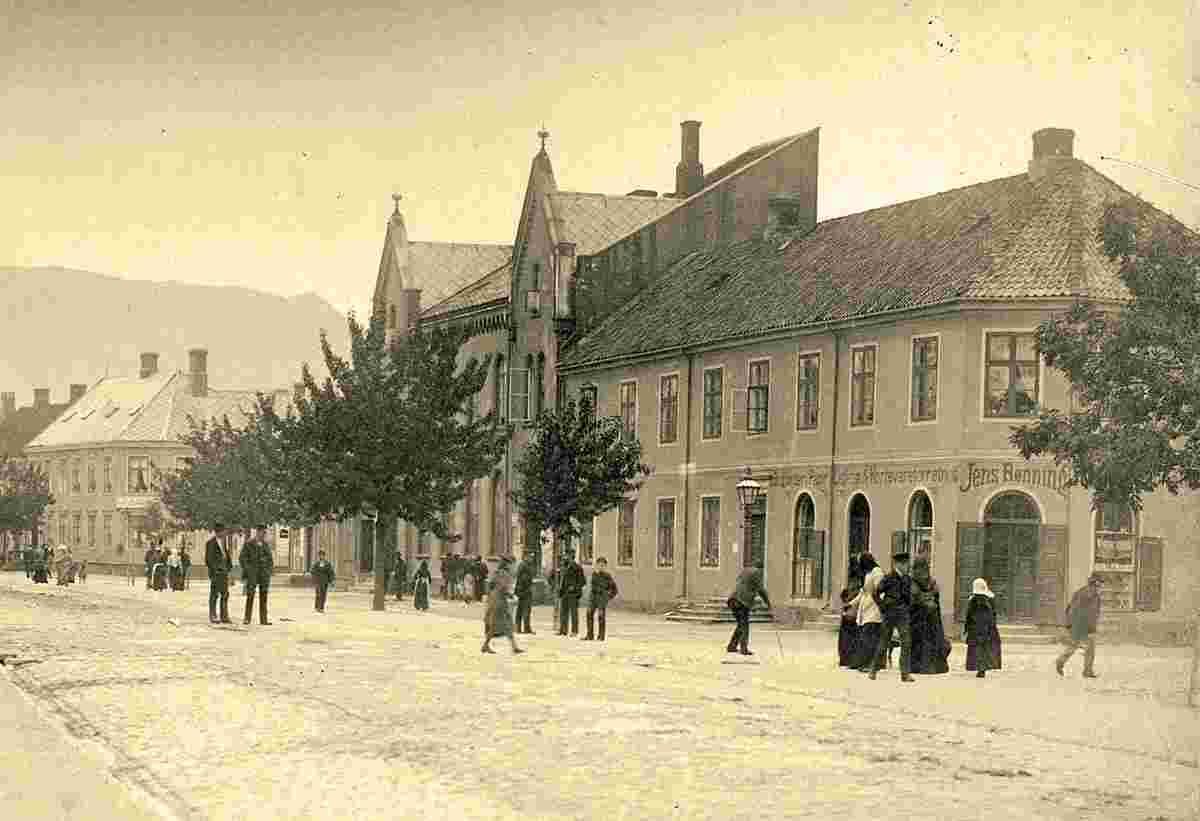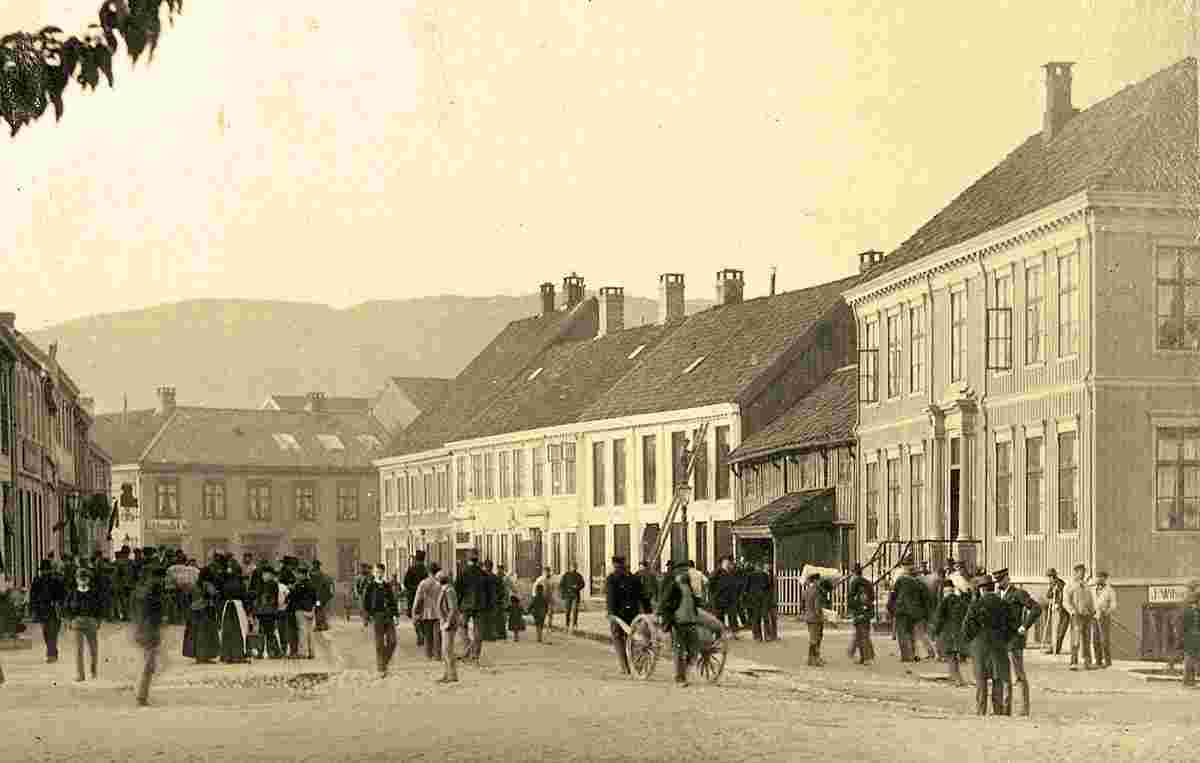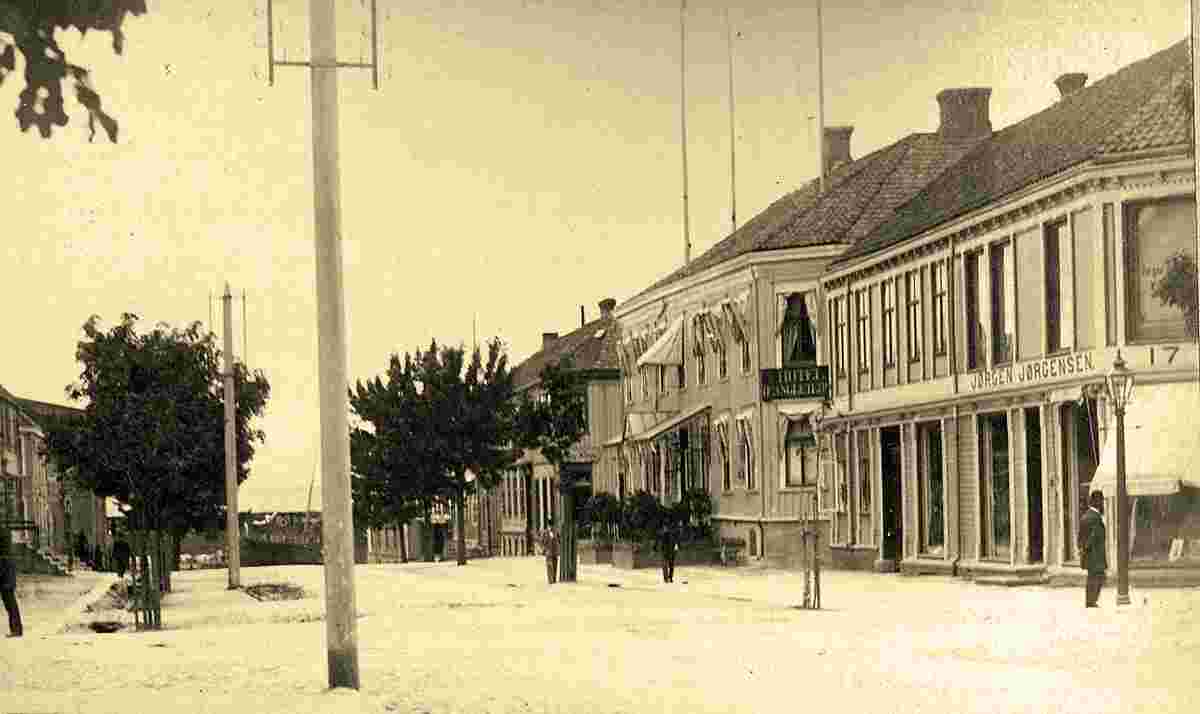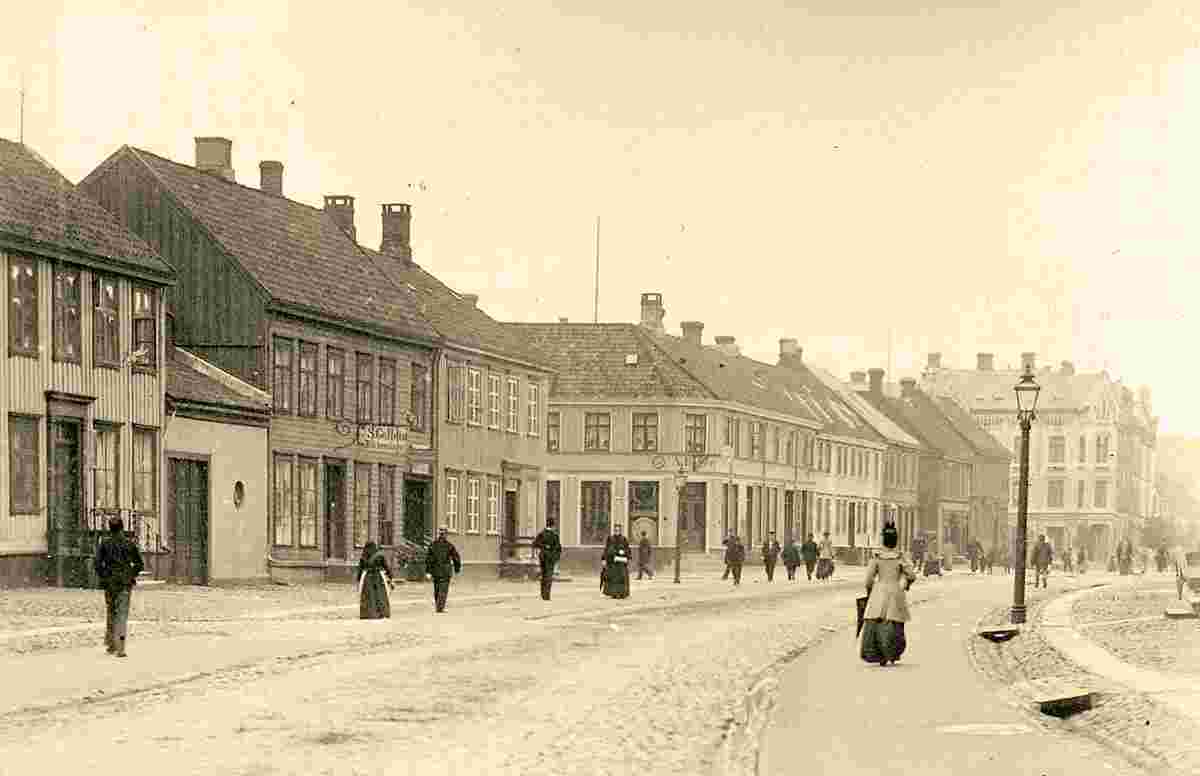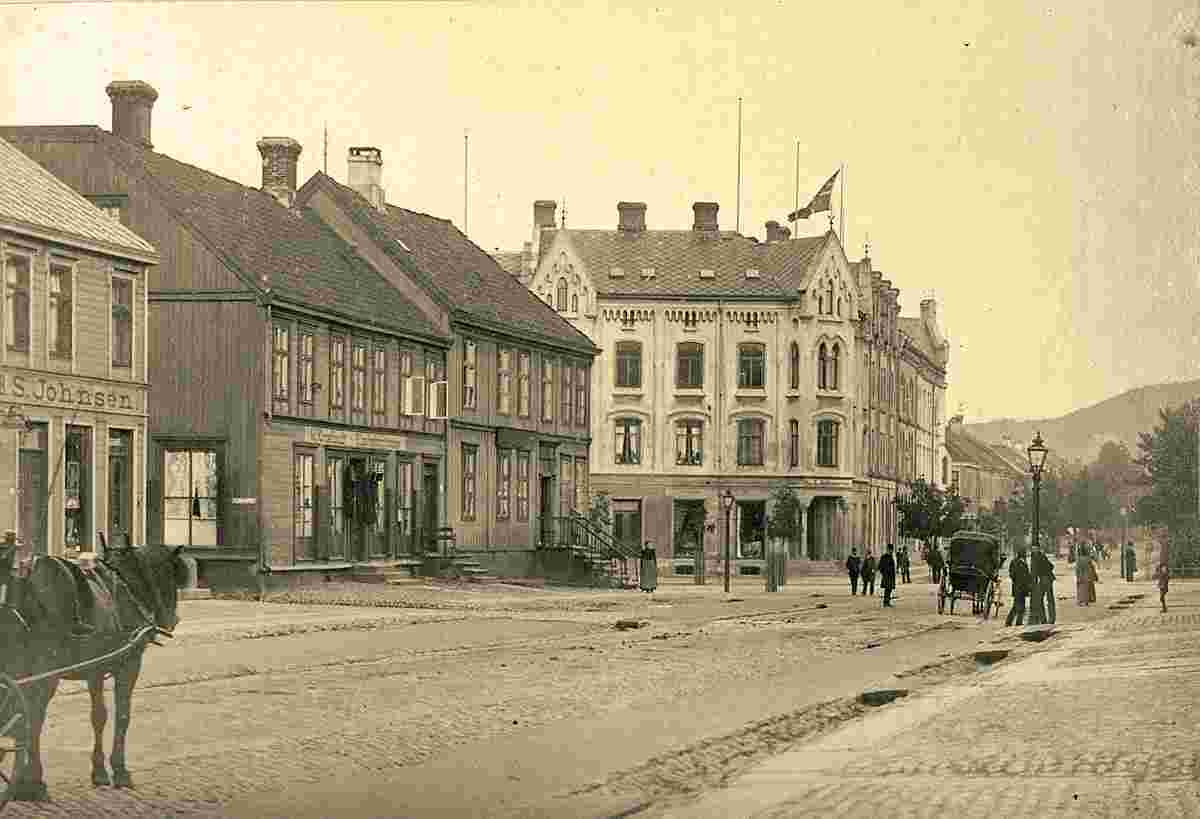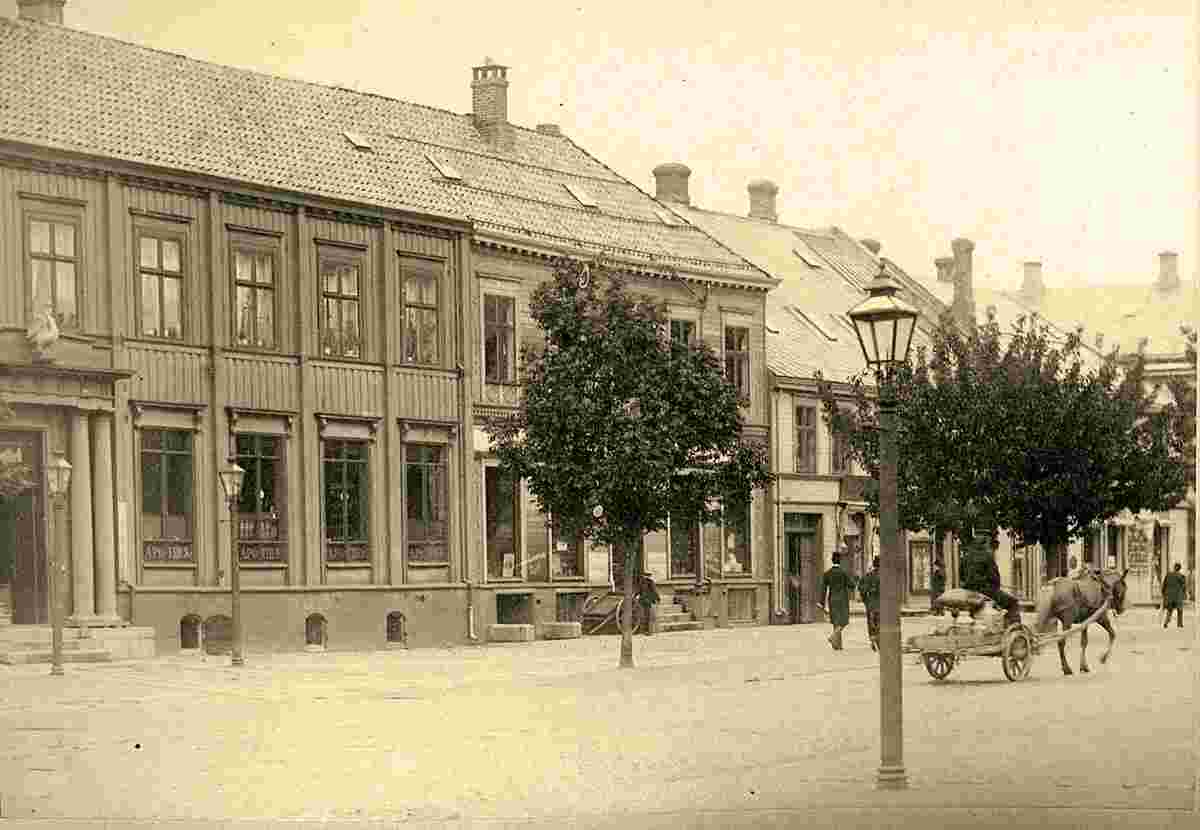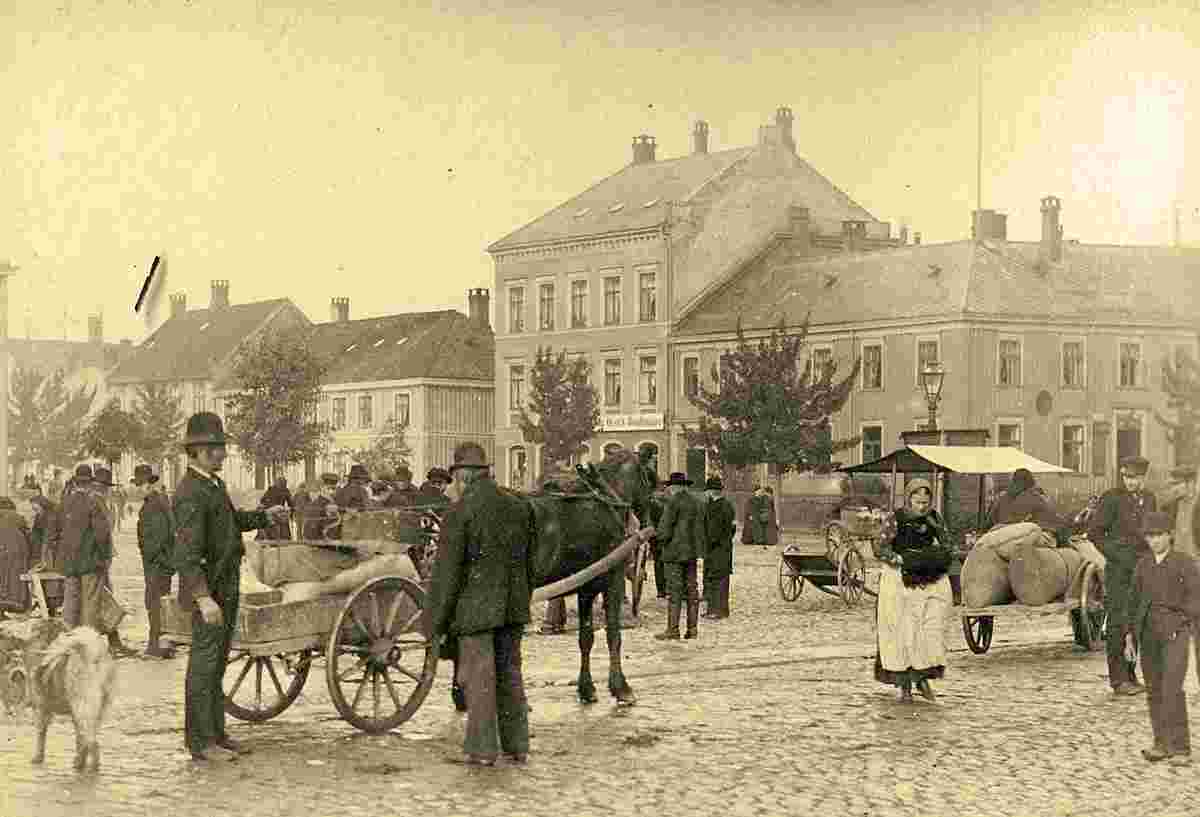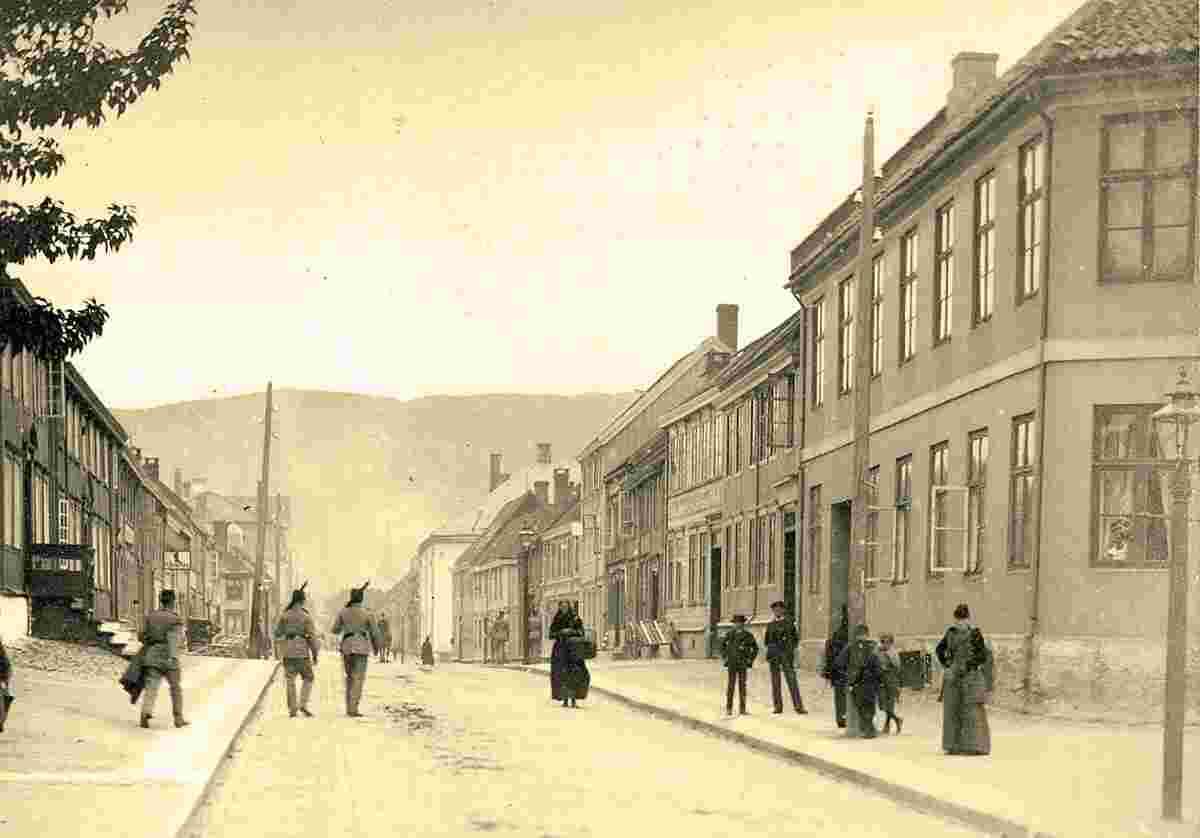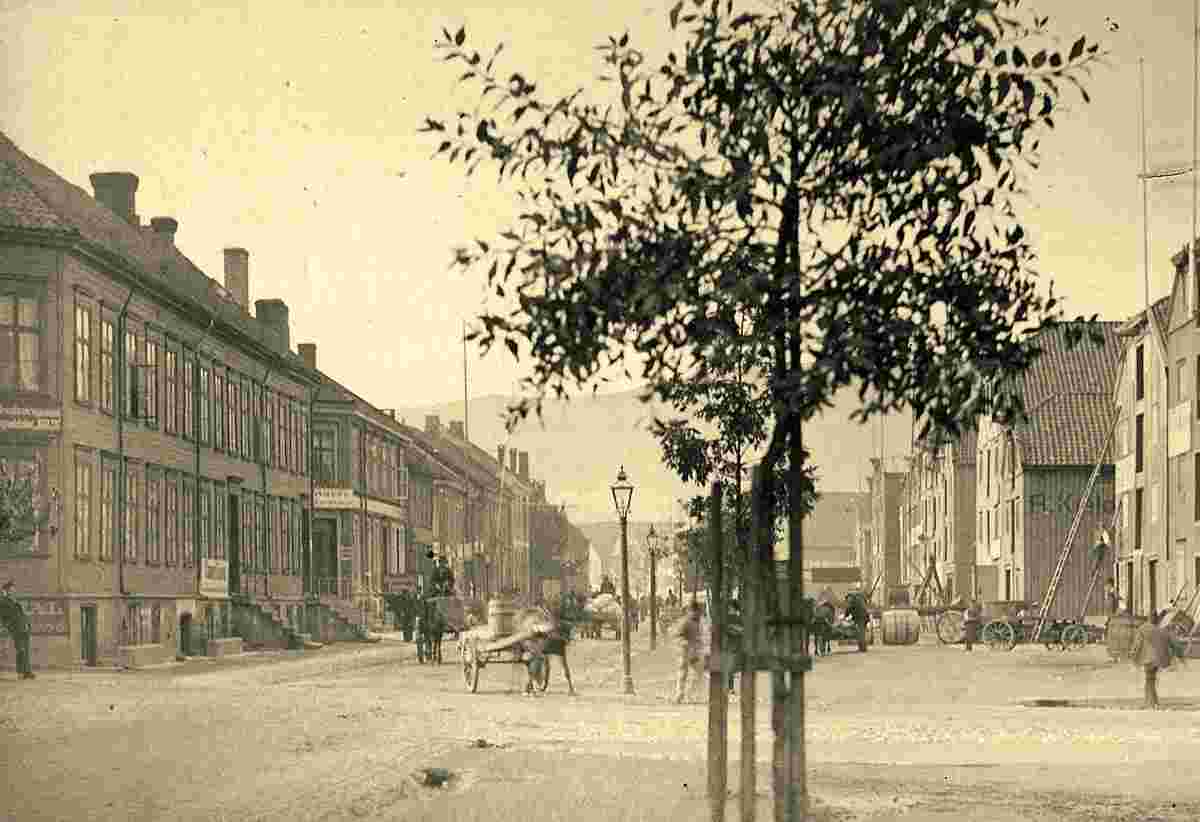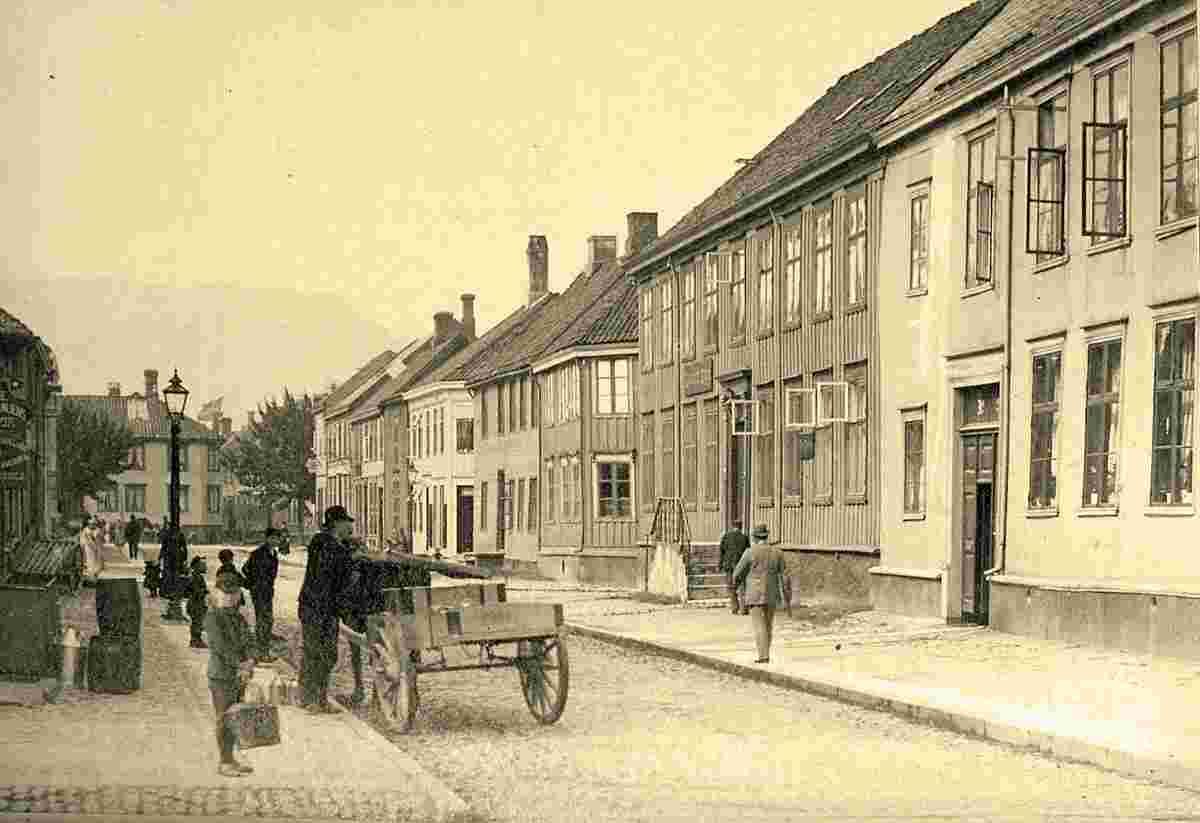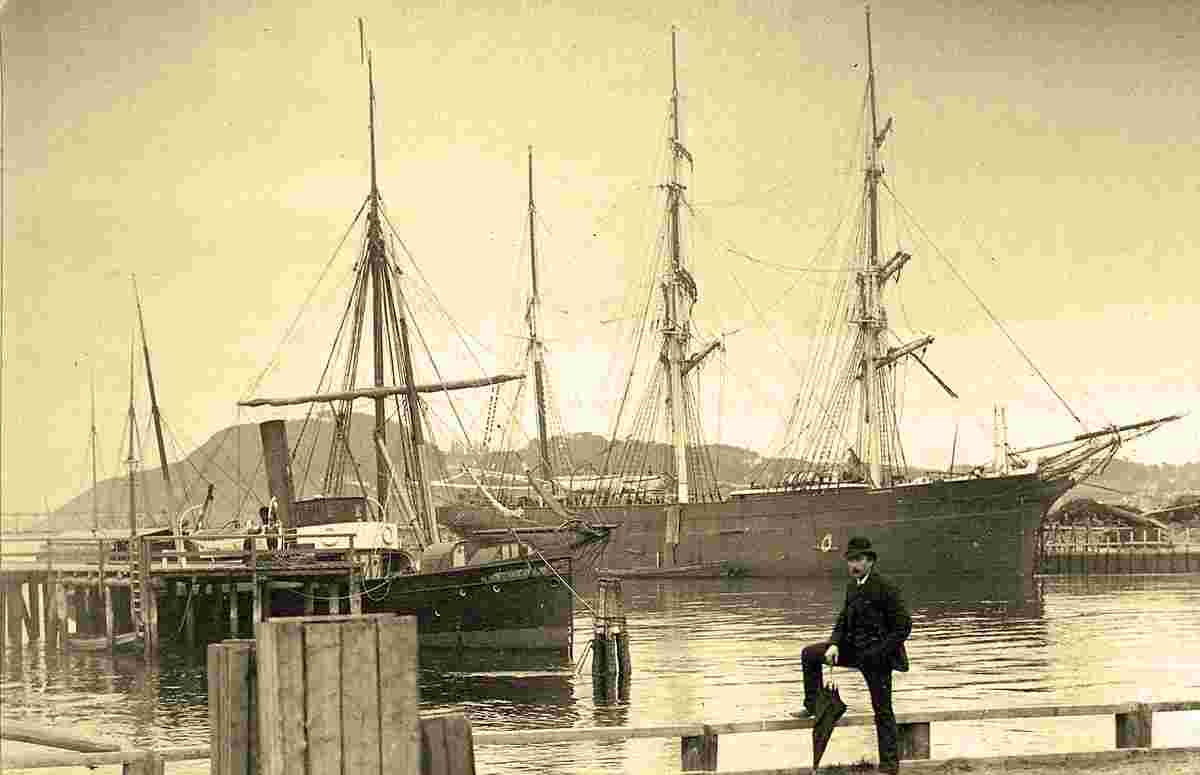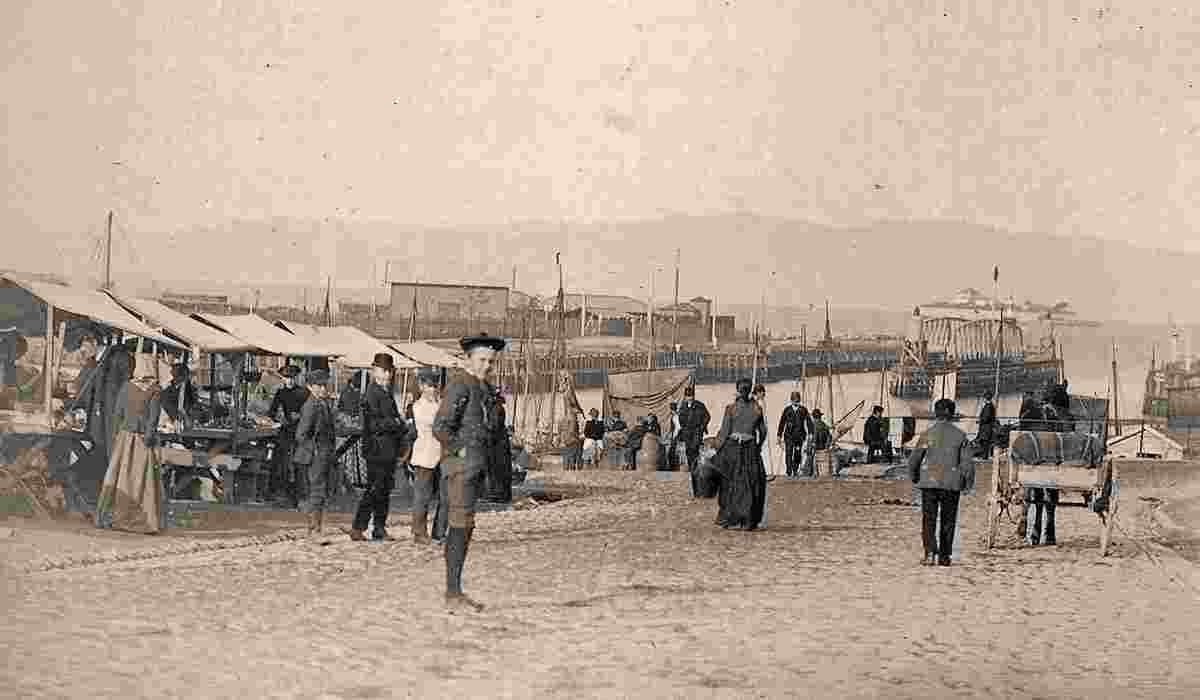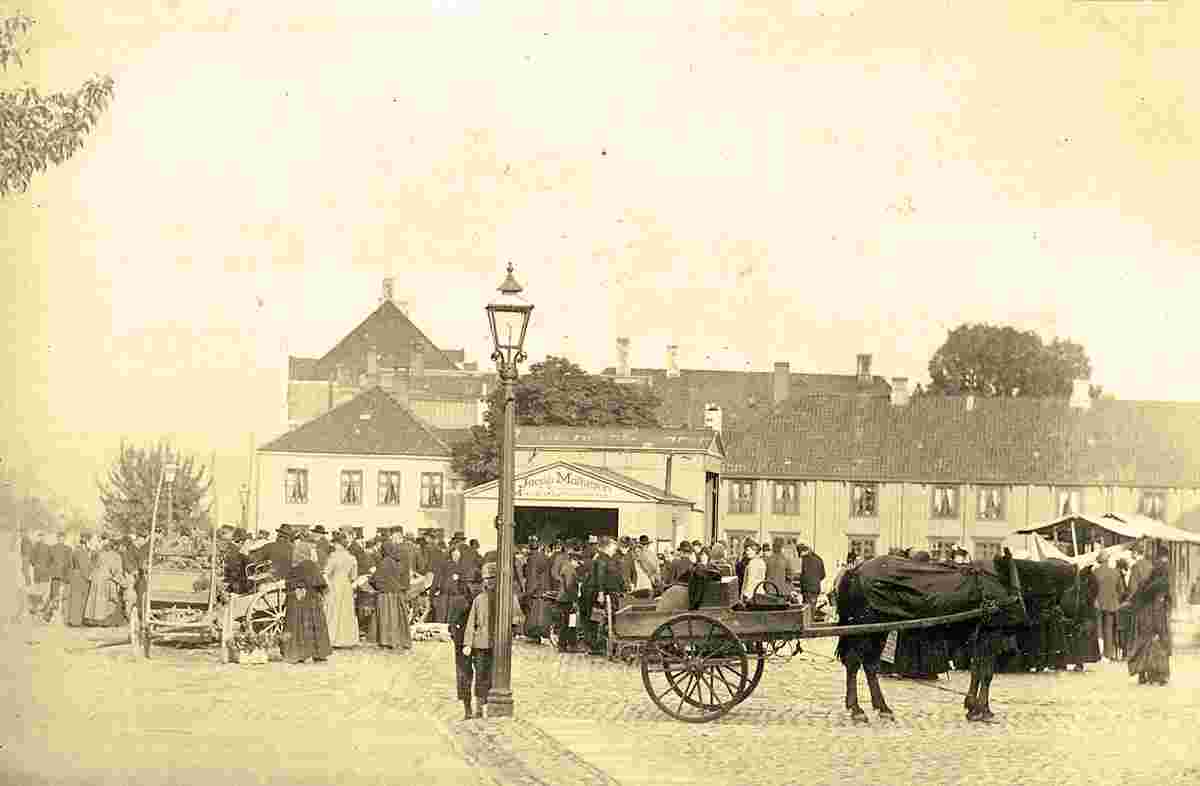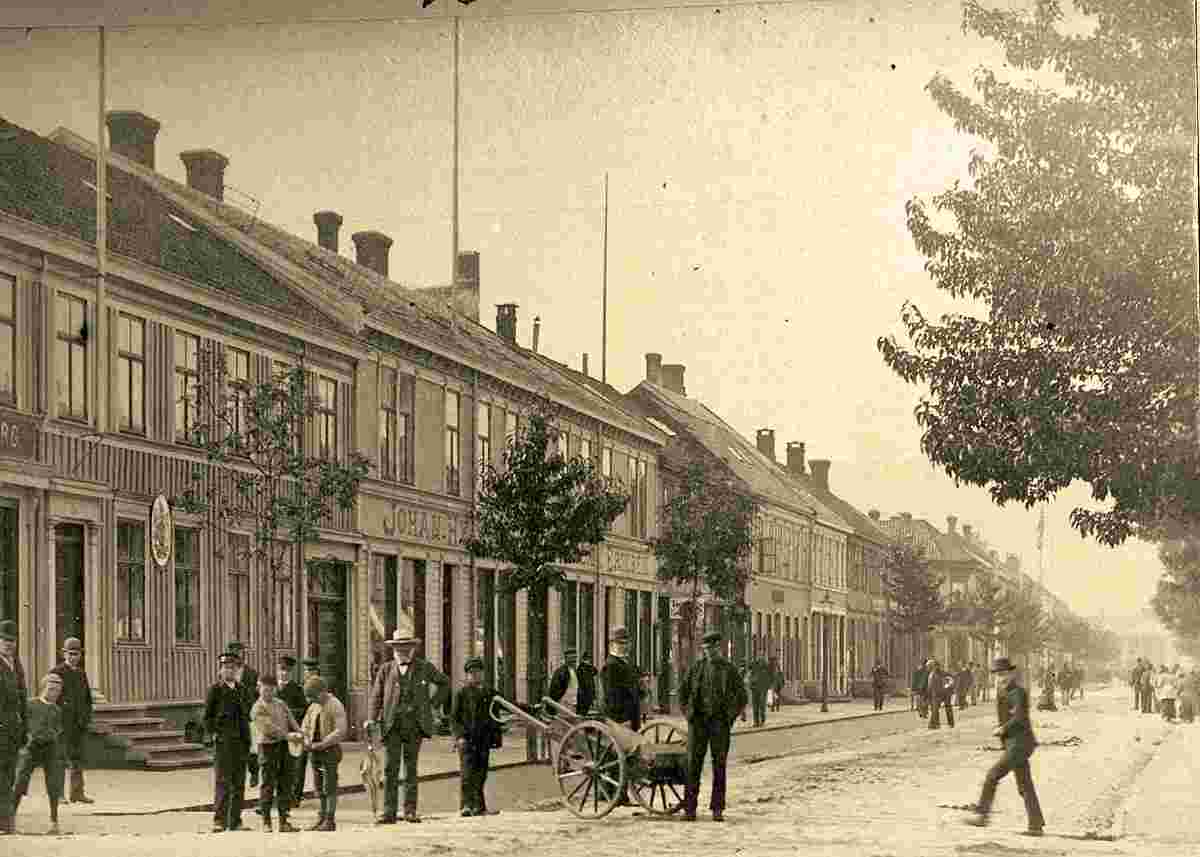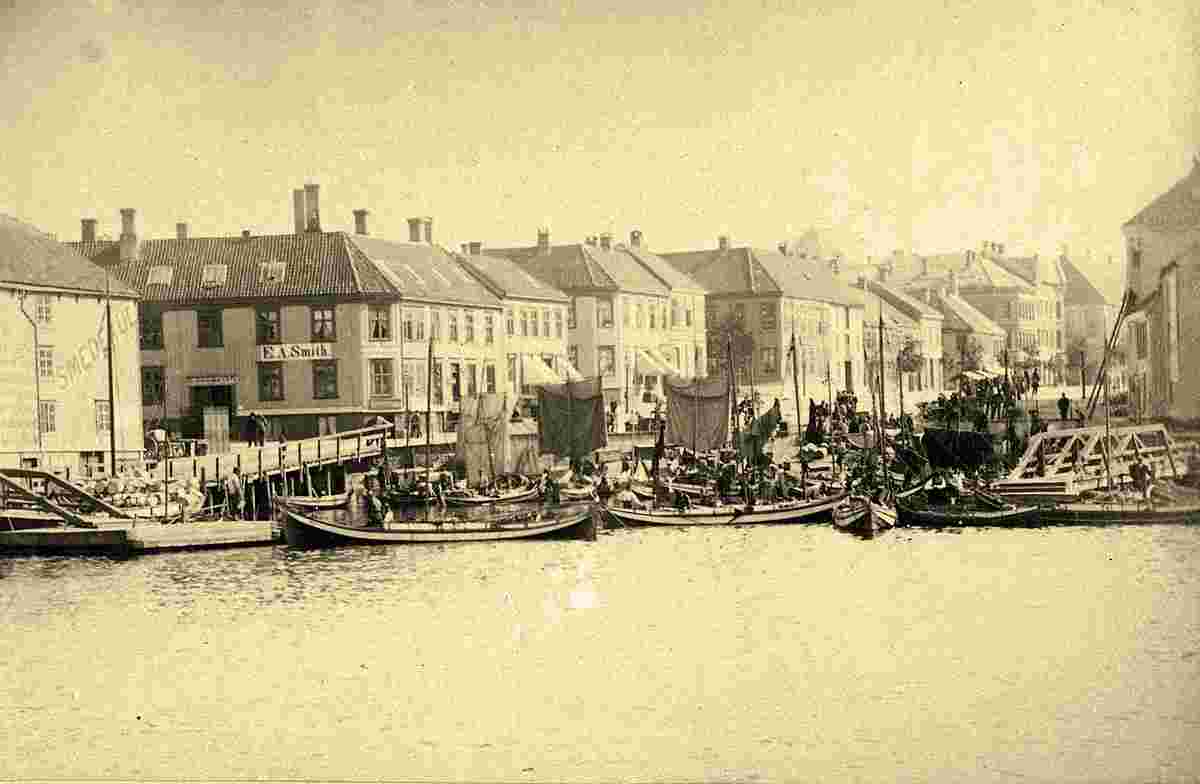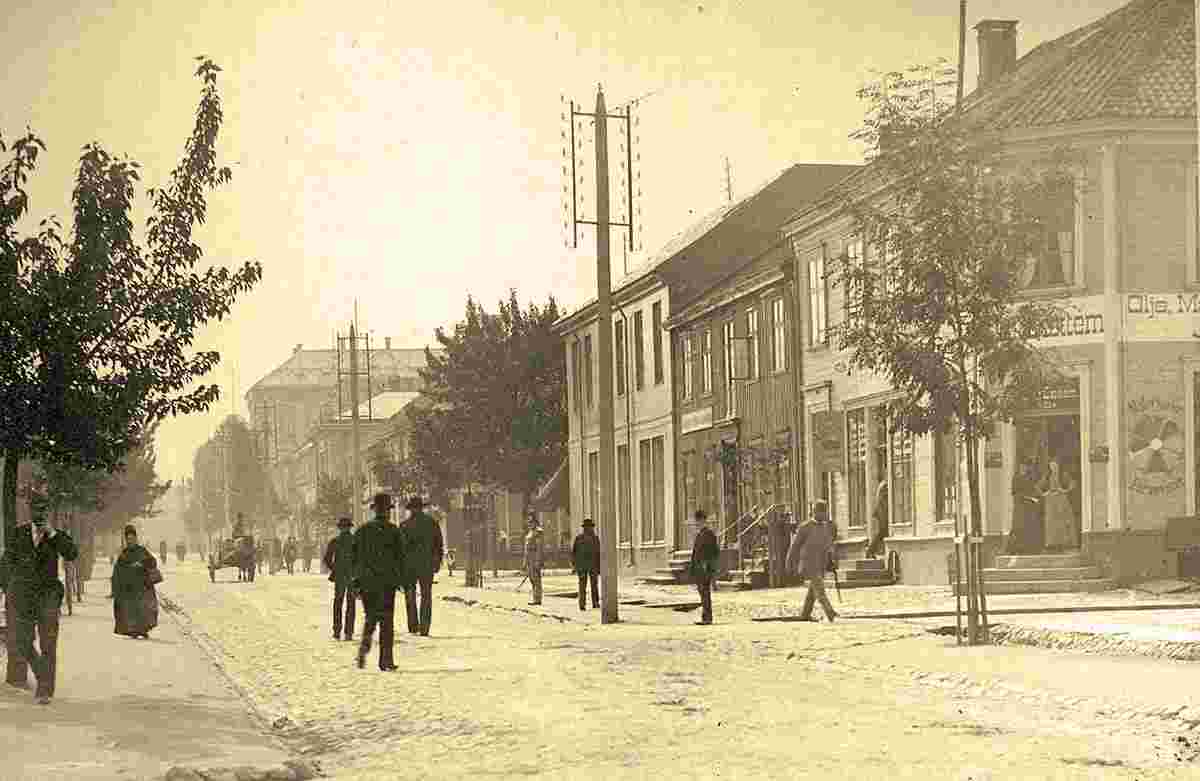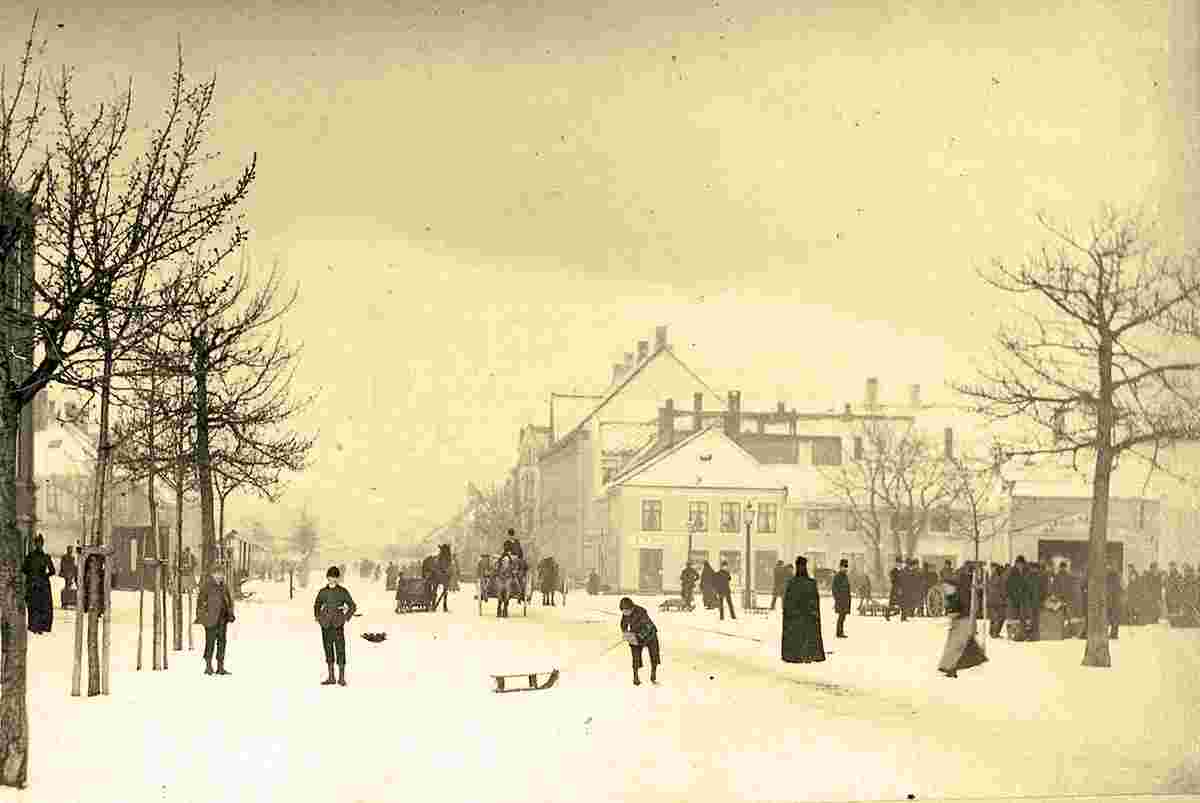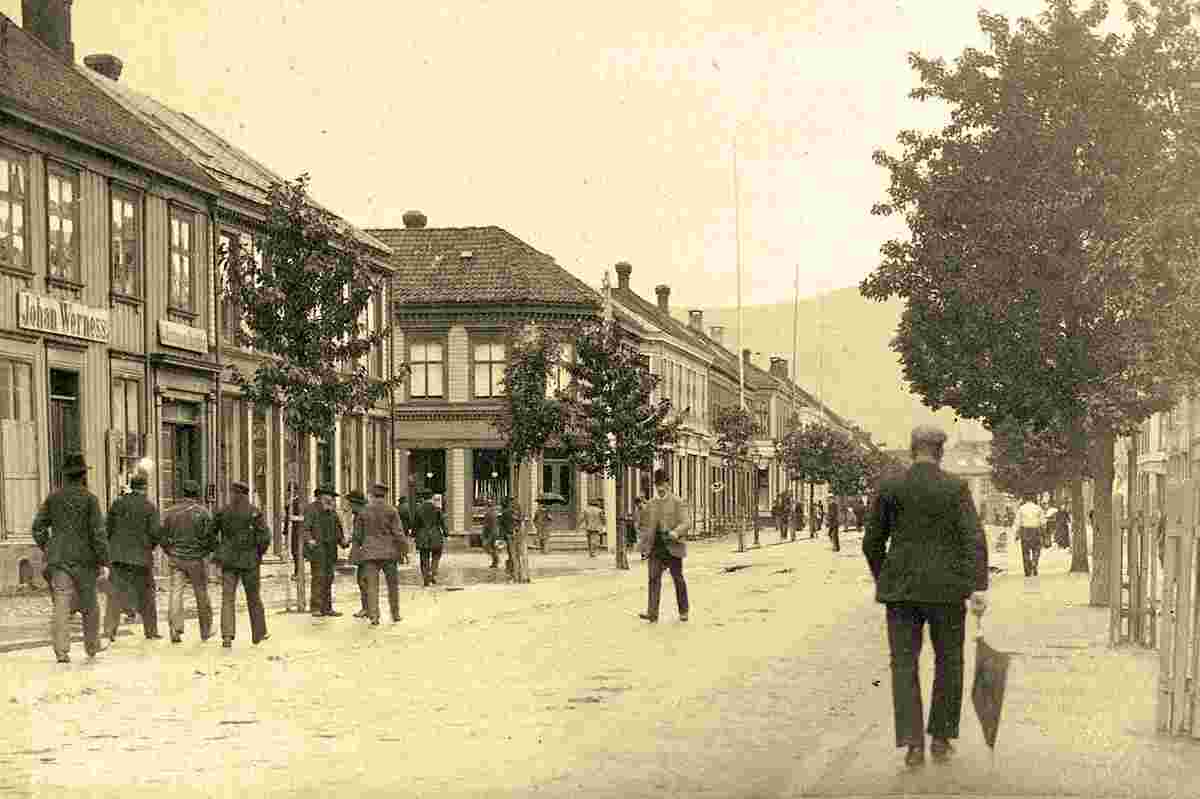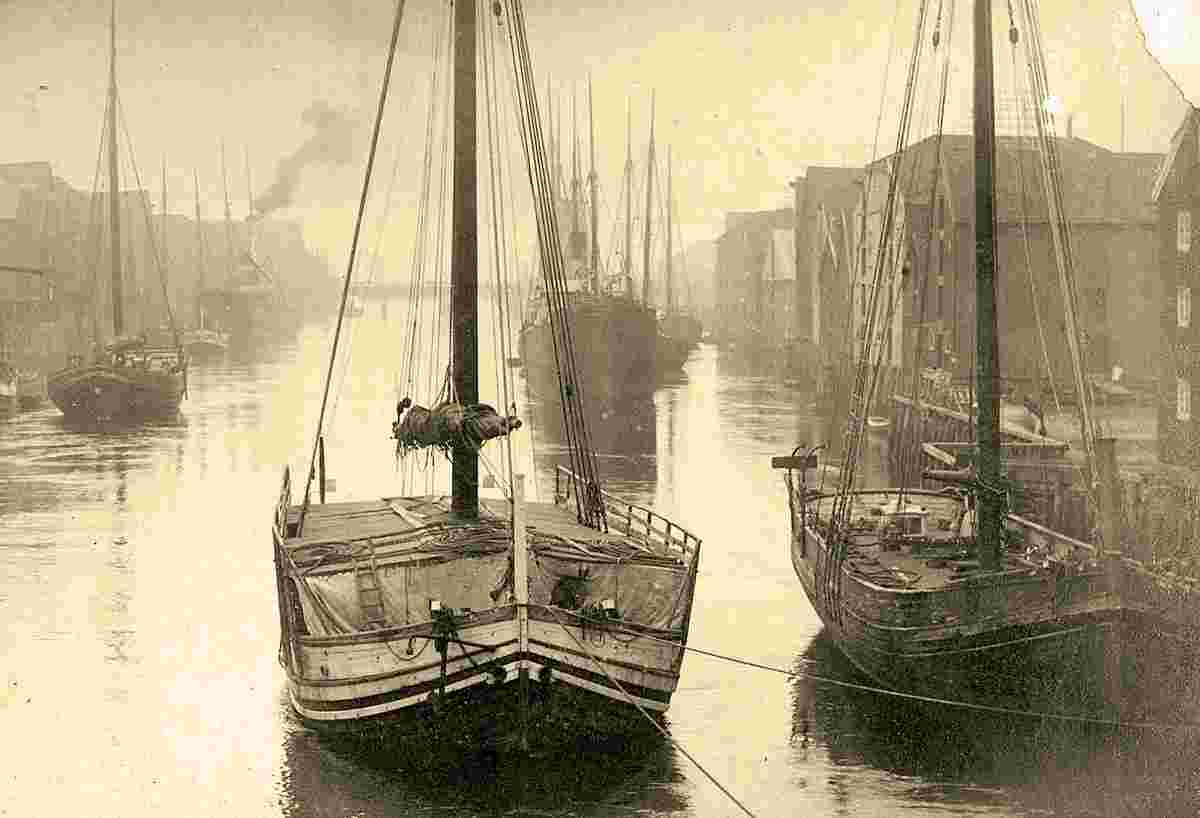Historical and old photos of Trondheim, Sør-Trøndelag
HistoryTrondheim was named Kaupangen (English: market place or trading place) by Viking King Olav Tryggvason in 997 CE. Shortly thereafter it came to be called Nidaros. In the beginning it was frequently used as a military retainer (Old Norse: "hird"-man) of King Olav I. It was frequently used as the seat of the king, and was the capital of Norway until 1217. People have been living in the region for thousands of years as evidenced by the rock carvings in central Norway, the Nøstvet and Lihult cultures and the Corded Ware culture. In ancient times, the Kings of Norway were hailed at Øretinget in Trondheim, the place for the assembly of all free men by the mouth of the River Nidelva. Harald Fairhair (865–933) was hailed as the king here, as was his son, Haakon I, called 'the Good'. The battle of Kalvskinnet took place in Trondheim in 1179: King Sverre Sigurdsson and his Birkebeiner warriors were victorious against Erling Skakke (a rival to the throne). Some scholars believe that the famous Lewis chessmen, 12th century chess pieces carved from walrus ivory found in the Hebrides and now at the British Museum, may have been made in Trondheim. Trondheim was the seat of the Archbishop of Nidaros for Norway from 1152, who operated from the Archbishop's Palace. Due to the introduction of Lutheran Protestantism in 1537, the last Archbishop, Olav Engelbrektsson, had to flee from the city to the Netherlands, where he died in present-day Lier, Belgium. The city has experienced several major fires. Since much of the city was made of wooden buildings, many of the fires caused severe damage. Great fires ravaged the city in 1598, 1651, 1681, 1708, twice in 1717, 1742, 1788, 1841 and 1842; however, these were only the worst cases and there have been several smaller fires in the city. The 1651 fire destroyed 90% of all buildings within the city limits. The fire in 1681 (the "Horneman Fire") led to an almost total reconstruction of the city, overseen by General Johan Caspar von Cicignon, originally from Luxembourg. Broad avenues like Munkegata were created, with no regard for property rights, in order to stop the next fire. At the time, the city had a population of under 10,000 inhabitants, with most living in the downtown area. After the Treaty of Roskilde on 26 February 1658, Trondheim and the rest of Trøndelag, became Swedish territory for a brief period, but the area was reconquered 10 months later. The conflict was finally settled by the Treaty of Copenhagen on 27 May 1660. During the Second World War, Trondheim was occupied by Nazi Germany from 9 April 1940, the first day of the invasion of Norway, until the end of the war in Europe, 8 May 1945. The German invasion force consisted of the German cruiser Admiral Hipper, 4 destroyers and 1700 Austrian Mountain troops. Other than a coastal battery opening fire, there was no resistance to the invasion on 9 April at 5 AM. On 14 and 17 April, British and French forces landed near Trondheim in a failed attempt to liberate Trondheim as part of the Namsos Campaign. During the occupation, Trondheim was the home of the notorious Norwegian Gestapo agent, Henry Rinnan, who operated from a nearby villa and infiltrated Norwegian Resistance groups. The city and its citizens were also subject to harsh treatment by the occupying powers, including imposition of martial law in October 1942. During this time the Germans turned the city and its environs into a major base for submarines (which included building the large submarine base and bunker DORA I), and also contemplated a scheme to build a new city for 300,000 inhabitants, Nordstern ("Northern Star"), centred 15 kilometres (9 miles) southwest of Trondheim, near the wetlands of Øysand in the outskirts of Melhus municipality. This new metropolis was to be accompanied by a massively expanded version of the already existing naval base, which was intended to become the primary future stronghold of the German Kriegsmarine. Today, there are few physical remains of this enormous construction project. Municipal historyThe city of Trondheim was established on 1 January 1838 (see formannskapsdistrikt). On 1 January 1864, part of Strinda (population: 1,229) was amalgamated with Trondheim. Then, on 1 January 1893, another part of Strinda (population: 4,097) was transferred to Trondheim. On 1 January 1952, the Lade area of Strinda (population: 2,230) was transferred to Trondheim. On 1 January 1964, a major municipal merger took place: the neighbouring municipalities of Leinstrand (population: 4,193), Byneset (population: 2,049), Strinda (population: 44,600), and Tiller (population: 3,595) were all merged with the city of Trondheim (population: 56,982), which nearly doubled the population of the municipality. On 1 January 2020, the neighboring Klæbu Municipality (population: 6,050) was merged with Trondheim Municipality. Coat of arms and sealThe coat of arms dates back to the 13th century. To the left, there is an archbishop with his staff and mitre in a church archway. On the right, a crowned king holding scales in a castle archway. These two pictures rest on a base which forms an arch. Underneath that arch, are three male heads which symbolise the city's rank as Norway's first capital and the archbishop's place of residence. The scales symbolise justice and the motif is based on the political philosophy of the 13th century, where the balance of power between king and church was an important issue. The three heads at the bottom may symbolise the city council. The motif is unique in Norwegian municipal heraldry, but similar motifs are found in bishopric cities on the continent. The design of the coat-of-arms that was adopted in 1897, and is still used today, was made by Håkon Thorsen. Jewish historyJews began to settle in Trondheim in 1880, after the change of the Norwegian constitution in 1851, granting Jews permission to settle in Norway. The first synagogue in Trondheim was established in 1899, and a newer one came into use by 1925. By 1900, 119 Jews were living in Trondheim, reaching 260 by 1940. The Nazi regime confiscated the synagogue in 1941, and used it for military purposes. In January 1942, the town Jews' identification cards were stamped with the letter "J", and confiscations started to be more and more common. Shortly after, Jews from Trondheim began to emigrate to Sweden. The rest were sent to Auschwitz in October 1942. In 1945, after the end of the war, around 80 Jews returned to the city. Out of the 135 individuals sent to Auschwitz, only five remained in Norway. It is unclear how many others, if any, survived. The synagogue was repaired in 1947. In May 1997, a Jewish museum was opened in Trondheim. At the turn of the 21st century, 120 Jews were living in Trondheim. Origin: en.wikipedia.org | ||||||||||||
 |
Historical and old photos of Trondheim, Sør-Trøndelag
Historiske og gamle bilder av Trondheim, Sør-Trøndelag |
| Main page • Countries of Europa • Cities of Norway |
| Robinson Rd, CB 13862 Nassau, NP, The Bahamas |

